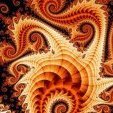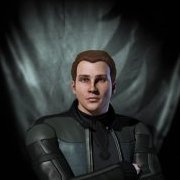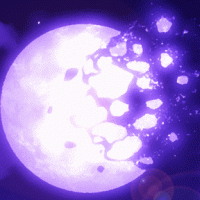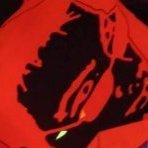Search the Community
Showing results for tags 'splintering'.
-
I was thinking last night about the significance of broken oaths and damaged bonds on Roshar, and how Adolin has helped with some of those on the back end. His relationship with Maya is the most obvious example, but I also think that his relationship with Gallant is similar. Dalinar's modes of action no longer have much use for a courageous Ryshadium and so Gallant ended up kind of abandoned in a paddock at Urithiru. Adolin recognized this and came to spend time with him, which I imagine was good for Gallant, and ultimately Gallant even allowed Adolin to ride him (something Ryshadium essentially never allow for anyone but their chosen rider). I think that this was underplayed in Rhythm of War. I don't think that Gallant was damaged in the same way as Maya, nor to the same degree. But we now have two examples of Adolin helping rare, strong-bonding beings not through the formal commitments those beings normally make but instead by dedicating himself, his time, energy, and compassion to them. And in turn he's getting things from them that, we've been told, simply don't happen-- a deadeye who can think, act, and speak, as well as a Ryshadium's respect and service (or at least assistance). In Cosmere terms these things really make me think of Devotion, though I know we don't have a lot of information on how she behaved before she was Splintered. Adolin is a devoted person: to his family, his friends, his duties, his swordsmanship, and probably other things as well. I don't think that Adolin is going to take up the Shard of Devotion, if only because that's already getting too common in the books and typically fails to resolve much. I doubt that very many long-running, inter-book plotlines are going to converge on that same outcome. And I don't want to get ahead of myself with specific predictions on matters about which we still lack basically all detail. But given that Devotion's Splintering (along with Dominion's) was reportedly an unusual type, and wound up with Devotion being crammed into the cognitive realm and its Vessel killed, I see some parallels. Radiant spren becoming deadeyes was (theoretically, once) irreparable, and yet Adolin has upended that through a method totally different than anything Honor might have promoted. Maybe something else broadly thought to be impossible, even for Shards, is in the works. The Splintering of Shards is going to be addressed at some point in future books, and what Adolin has been accomplishing has already started to rock Roshar. I think that his actions' significance will continue to be impressive, surprising, and important, and that his characterological alignment with Devotion, conceptually, is ultimately going to matter for that too. Does anyone here have any other thoughts, evidence, critiques, or anything else for discussion around the topic?
-
2
-
- stormlight
- elantris
-
(and 4 more)
Tagged with:
-
I don't think think we put enough focus on Elantrian investiture. Intriguing facts Sel is a system with many magic systems, which instead of getting power from the spiritual realm, they siphon the power directly from the Dor (the two splintered shard's power) Elantrian magic seems is the only investiture (we know of) where the magic's power is linked directly to the practitioner's proximity to Elantris (which is curiously located next to a perpendicularity) Sel magic seems unusually versatile even among Sel magics, allowing teleportation, illusions, transmutation, healing, energy summoning, strength/speed increase, emotion manipulation (likely via connection), among presumably many others Brandon said that Elantris was an “oddball among the cosmere magic systems” Keshu taught that “God would come to earth once all mankind was unified” unified, being a vague term Wryn's letter to Hrathen stated that “the time for [Jaddeth’s] ascension is near” likely referring Jaddeth coming up from underground The Fjordells seemed suspiciously interested in Destroying Elantris even when the inhabitant were, comparatively defenseless theories All the Elantrians are technically all ascended at once calling upon the directly Dor’s power using Aons as “codes” so theoretically anything a shard can do, an elantrian can do as well provided the know the correct Aons. That would mean an Elantrian the is the Shard so any Seons connected the an Elantrian are not longer to the person’s identity but instead to the shard itself. So when the Reod happened all the seons could only pull their connection to the physical realm from the blocked off Dor. Wryn was not talking about “ascension” in the literal sense but in the Shard sense. He needed all the elantrians killed so the power wouldn’t be connected to anyone alive anymore, that way the shard’s intent would let someone else bear the power totally. Maybe there are many other perpendicularities on Sel and if someone were to control, or “unify” all of them they would be able to put the shards back together and “Fully” ascend.
- 2 replies
-
4
-
- splintering
- aondor
- (and 6 more)
-
We know Honor was splintered around the Recreance and that the Recreance was prompted by that generation of Radiants finding out humans were the real Voidbringers, and at that point Tanavast was overtaken by Honor's Intent and was also fighting Odium and so wasn't mentally stable enough to tell the Radiants that they were still morally okay. So what if the Radiants, having not a massive amount of guidance on how shards work, picked up on the fact he was fighting another god from his "ravings", and also noticed how he'd become obsessed with all oaths, good or bad and assumed that this was a consequence of the radiants existing. So what if they decided that they should break their oaths because they thought the oaths were what was draining Tanavast's sanity? Give just how powerful Surgebinding is, we can assume that 9/10 orders of radiant, with most of each type spren probably bonded, all releasing the Investiture they had (kinda) borrowed from Honor did something like in Warbreaker, where The Stormfather also backs this up: The Radiants didn't abandon their oaths because they thought they weren't in the moral right anymore, they abandoned their oaths because they were "try(ing) to protect the world".
- 14 replies
-
1
-
We know Honor was splintered around the Recreance and that the Recreance was prompted by that generation of Radiants finding out humans were the real Voidbringers, and at that point Tanavast was overtaken by Honor's Intent and was also fighting Odium and so wasn't mentally stable enough to tell the Radiants that they were still morally okay. So what if the Radiants, having not a massive amount of guidance on how shards work, picked up on the fact he was fighting another god from his "ravings", and also noticed how he'd become obsessed with all oaths, good or bad and assumed that this was a consequence of the radiants existing. So what if they decided that they should break their oaths because they thought the oaths were what was draining Tanavast's sanity? Give just how powerful Surgebinding is, we can assume that 9/10 orders of radiant, with most of each type spren probably bonded, all releasing the Investiture they had (kinda) borrowed from Honor did something like in Warbreaker, where The Stormfather also backs this up: The Radiants didn't abandon their oaths because they thought they weren't in the moral right anymore, they abandoned their oaths because they were "try(ing) to protect the world".
-
So time and distance are irrelevant in the Spiritual Realm. But Shards (except the remains of Devotion and Dominion) exist primarily in the Spiritual Realm. So how can a Shard be Splintered at all? If it exists in a timeless way, shouldn't it's pre Splintered state still be there in the Spiritual Realm, since it once existed that way? Similarly, even to Shards the future is imperfectly defined... Does this mean that the timelessness of the Spiritual really means that "relationships between things in the Spiritual are defined by Connection, not physical dimensions of time and space" - not that the Spiritual Realm is truly eternal? So Splintering a Shard would be a matter of destroying the Connections among its Investiture (or between its Investiture and its Intent)?
- 1 reply
-
1
-
- shards
- splintering
-
(and 1 more)
Tagged with:
-
We are all aware odium has splinteded at least 3 shards (ambition, devotion, dominion) and didn't pick them up because he didn't want to corrupt his own? What id like to ask is what would the combined shard of odium, devotion, dominion and ambition be called? In this scenario he still killed those 3 but chose to take up the shards anyway, ignoring the 'no corruption' but he had originally Lemme know your thoughts!
- 19 replies
-
- splintering
- odium
-
(and 1 more)
Tagged with:
-
Hello, I'm new here but I've had a very tenuous theory about Honor's splintering that has been brewing in my mind as I reread the stormlight archive. It is said multiple times in the books that towards the end of Honor's life he condemned the Radiants to eventually destroy Roshar and at least once was said to have seemingly focused more on the actual oaths themselves and not necessarily what they meant. My hypothesis, based on the timing of his death (after Aharietiam but before the Recreance) and the above, is that Honor was able to be splintered because the Oathpact was broken. It would make considerable sense given that the Honorblades are, as far as we can tell, splinters of Honor and the Heralds are likely either entirely splinters or Invested enough by Honor that he would be affected by their choices. Even more, while we don't know exactly how the Investiture of it worked, something like the Oathpact (capable of holding back Odium in many ways until certain conditions were met. I base this on the fact that we don't see Odium's direct influence until Oathbringer which is after the Return begins, and given that we know powerful entities on the Voidbringer side can't enter right away it stands to reason that Odium is at least limited in some capacity from direct influence until the Return has begun for some time.) would likely have to involve Honor's influence or Investiture in some way. It is, after all, an oath and made by his chosen wielding splinters of his power. This, of course, does not explain the actual battle or some such, though I wouldn't be surprised if the Shattered Plains was involved. (It feels too neat to assume that is why they're shattered in the first place, but given how little we know, the possibility is not ruled out in my mind.) But I believe this theory would provide a step forward in understanding both why Honor changed at the end of his life and how he was able to be splintered at all and perhaps, even, why he decided to start divesting himself of his various responsibilities (i.e. creating Honorspren) towards the end of his life. What do you guys think?
- 3 replies
-
- honor
- splintering
-
(and 1 more)
Tagged with:
-
[Note: Reposted from older thread, which originally asked us to speculate about Odium's method of shattering shards.] My theory is that Odium's advantage and ability to shatter other shards is tied very tightly to his intent. Consider: 1. Odium's Intent Allows him to Perceive Evil and Flaws in Others Odium (at one point named “Anger”) appears to be an aspect of divine wrath. Divine wrath is not merely objectless anger or hatred, however, it is specifically hatred of evil (E.g. For the wrath of God is revealed from heaven against all ungodliness and unrighteousness of men, who by their unrighteousness suppress the truth, etc.) We know that Odium’s wrath is “separated from the virtues that gave it context” – so mercy, justice, and even the principles of “lex talionis” (“eye for an eye”) do not bar his anger. However, to be able to be wrathful about something, you must still have some conception of where it has gone wrong. Odium isn't just wrathful against anything and everything - his wrath has a focus. Whenever I think of Odium, I am reminded of the Demon’s Mirror from the “Snow Queen” fairy tale, described here: I think Odium’s intent makes him see both people and shards in their most negative, evil aspects. He compares them to perfection, and, in so doing, is filled with hatred towards their flaws and vices. It is this which makes him despise and hate the other shards, for he sees the ways in which they fail the people and cause misery and suffering. We see, I think, a hint of this in Odium’s conversation with Dalinar in chapter 57. Odium states that I think he is aware of how the other Shards are flawed and that this leads him to hate them. This explains both his desire to destroy them and his desire to remain unalloyed with their power, which from his perspective would be corrupting. We also see a little bit of Odium’s nature in his choice of allies: he fights with the party first injured in the desolation, the ancient Singers who were forced out of their land by humanity. He sees the evil the humans have done and he hates and despises it, but his hatred has no proportionality or mercy. He is willing to completely destroy even generations which have no knowledge of the crime and wipe them from the face of Roshar. I suspect, even should he succeed, Odium’s wrath would merely turn upon the victors (since they would have killed innocents in the process of victory). In fact, I suspect this has already happened once. I think Odium led the first desolation where the humans attacked the voidbringers, probably in response to some sort of wrong, then promptly switched sides to avenge the attacked party and punish the sins on the human side. In this way, his wrath is an example of the saying “an eye for an eye makes the world blind.” Evil begets evil and so Odium’s wrath is never satiated – he sees all the flaws and will always be supporting a twisted sort of vengeance till eternity end. 2. The Ability to See Flaws allows Odium to See Weaknesses in Shards Seeing the flaws of both mortal and Shard however, would provide Odium with a distinct advantage. It means he can see where a Shard is in conflict with their intent, or where their intent is flawed. He is aware of their Hamartia (fatal flaws). Since all of the Shards are pieces of a complete unity, they each have weaknesses that make them blind to their own particular evils – none of them are perfectly “good” or can act perfectly in align with their intent. My theory is that shattering specifically occurs when a shard is forced into a position where it acts against its own intent or else is forced to face the flaw in its own intent in a major way. In Honor’s case, I suspect he was shattered either upon breaking one of his own Oaths or upon realizing that Oaths were fundamentally flawed. (I think the Herald’s betrayal is strongly tied into this in some way and that it either forced him to go against one of his oaths or else made him realize that Odium was correct and oaths were imperfect.) Hypothetically then, any Shard forced into a position that goes against its own intent would be shattered. Preservation, for example, might be shattered by either getting its power to cause an act of great destruction, or else demonstrating that, by preserving things, it is in fact ruining them by making their natures fundamentally different. Cultivation might be shattered by either forcing it to “burn” its “gardens” or else revealing a flaw in its methods of “cultivation”. Ambition might have been shattered by forcing it into a position of subservience and so on and so forth. I don’t know enough about most of the other shards to speculate, but I think given enough information a flaw in each of their intents could be found.) If true, Odium could potentially be shattered in one of several ways: 1) Forcing him into a position where his wrath is turned inward to attack his own flaws.* 2) Forcing him to confront a being of perfect good which has no flaws. 3) Forcing him to confront one of the virtues which wrath is supposed to be associated with (i.e. mercy), something good which takes into account error/sin and forgives or heals it. * I can’t help but wonder if this hasn’t already happened to a certain degree. We know the Unmade are, at least in some respect, Shards of Odium. Perhaps he is confronting evil aspects inherent in all men (including himself) and intentionally removing these “flaws” from the Shard, spinning them off as separate evil entities and thus making himself “the Broken one”. Alternatively, they might be “distorted reflections” of the evil in either men or Shards that he uses to accomplish his attacks. Cultivation would probably be in a good position to pull something like this off, probably by guiding the people of Roshar, both Singer and human, to rally against him and reject their mutual hatred in a larger version of Dalinar’s refusal to let Odium “have his pain” (i.e. his flaw). However, if Odium were shattered, I think the result would likely be tragedy. Consider the above quote with the Demon’s Mirror. If he is shattered, Odium would become even worse, because his splinters would enter into the hearts of men, Singer, Spren, and (perhaps) Shard and begin to destroy them. Instead of one locus of hatred, there would be many. 3. Possible Objections: Objection 1: An enhanced ability to see flaws may in fact be part of Odium’s nature, but the shattering may still be done by corrupting investiture. Odium would probably be better at corrupting investiture under this theory than other Shards, because he would see the “flaws” in the magic be able to take advantage of this, twisting the investiture towards his own use. Response 1: This is likely true. However, to destroy a shard, Odium would most probably have to corrupt a large portion of their investiture (perhaps close to half) to be able to overpower them. It seems unlikely that he would be able to corrupt such a large portion of their nature, particularly if they found out and resisted. Response 2: In corrupting investiture, Odium must exert some of his power. He will thus weaken himself proportionally to how much he invests. He might, if clever, be able to use this to destroy one Shard if he outfought them. However, if he must use so much power, how can he possibly destroy two? (Which he has done once and is attempting to do again.) In attacking one Shard, Odium would leave himself vulnerable to the other, who has their investiture free and now knows how he shattered the first shard. I think the shattering must instead be something that can be swift and not readily accomplished by the other shard. Response 3: If the corrupted investiture is formed by the power of two shards, why can the other Shard not attack Odium through the same route? You say because the other shard has invested more in the world. But if Odium is investing some power in the other Shard’s magic, why can that Shard not turn the corruption against him? Response 4: Some of the suggested corruptions do not seem to be influenced by Honor. The unmade in particular do not appear to have anything honorable about them. I do not see any good reason to believe they are large chunks of Honor’s power that have been corrupted (at this time). The voidsurges DO seem to be corruptions of the Nahel bond, but this bond was first formed by Spren, who figured out how to mimic what Honor did with the Honorblades. Though I suppose it’s possible that the formation of the voidish surges was a corruption of Honor’s investiture, I’m not sure of this. Response 5: If Odium uses the corruption method, then Honor should have been unraveling ever since Odium first formed the corrupted voidlight. However, since they seem to have been around a long time and Honor seems to have shattered relatively abruptly, I do not see how they can be the weapon that did it. Objection 2: Odium names himself Passion and, although Brandon implies he is partially deceiving himself, his words and methods seem to imply that there is in fact some truth to this. Response 1: Odium does in fact feel emotion besides anger. Anger is powerful precisely in so far as it mourns the loss of what is good. He thus does experience the positive emotions he states – joy, happiness, etc. etc. – because he must first appreciate these things before he can be wrathful for their loss. He must first love innocence before he can hate evil for defiling it. His interpretation thus is in some ways closer to the truth than the interpretation that he is mere “anger,” but it also misses the mark in that he is not just raw emotion (else his emotion would not be weighted towards vengeance). Response 2: Odium is represented in Dalinar’s vision as a flame. This is similar, interestingly, to the Altar of the Saints described in Revelation, which is fed by the tears and mourning of the oppressed: “I saw under the altar the souls of those who had been slain for the word of God and for the testimony they had upheld. And they cried out in a loud voice, “How long, O Lord, holy and true, until You judge those who live on the earth and avenge our blood?” The altar is fueled by injustice – by passion, by weeping, by joys lost, by sorrows and fear – but it burns at the foot of the throne of God, bringing their prayers and mourning into his presence, and fuels his wrath towards the wicked. Metaphorically, I think Odium’s flame is similar. The weeping and prayers of the people, their emotions, feed his wrath. In fact, now that I think of it, the burning of glyph wards may in fact be an aspect of Vorinism that originated in the old world and once was (or perhaps still is) of Odium. Response 3: I believe Odium may be using the interpretation of himself as emotion to avoid his own fatal flaw -- the fact that he is wrath unbound by virtue. He thus interprets all the evil emotions inside himself as simply part of a vast "Passion," which of course must contain these negative emotions. In this way, he bears no guilt for anything he does that is evil and need not confront his own flaws. Response 4: Both Ruin and Odium discuss passion, and, we are told, so would other shards. I think "Passion" is probably something Brandon has used to divide shards into categories, much as with the metals in Allomancy. Ruin and Odium possess Passion as it is part of their intent (and apparently the intent of other shards), but they are not passion itself. This was originally posted in the Cosmere forum, but some people recommended that I make it into its own topic and I think it fits better in the Stormlight Forum since I am mostly discussing Odium. Original post: I welcome any criticism and particularly any insight into Brandon's comments that may be relevant to this conversation.
- 27 replies
-
10
-
Ok, so bear with me on this one. Something has been bothering me, like many who read Oathbringer, ever since Odium said "We killed you." Like many Stormlight fans, I have been mentally (and literally) screaming "What do you mean by WE!" And anyway I've done some thinking, and I think that Unity, instead of a new Shard, as many have theorized, is actually and old Shard that used to live on Roshar. A Shard that was (presumably) killed by Odium and ((possibly Honor?)) (((Working together?))) There is a little possible evidence for this. In the death rattles, one of them goes like "Three of Sixteen ruled, now the broken one reigns" or something like that. Feel free to correct that. Anyway, the way that is worded makes it seem like Odium, the broken one, is not in that original three. Also, since we know there are 3 god-spren--the Storm dad, Nightwatcher, and the Sibling, that leads me to believe that there used to be 3 Shards other than Odium, since it doesn't make sense to me that a Knight Raidiant would bond to a spren of Odium, or that Cultivation or Honor would have two god-spren. That other Shard, Unity, was not liked by Honor or Cultivation or any other Shard. Which makes sense, because they might feel threatened by the fact that he might try to Unite the Shards back into Adonalsium or something. I'm thinking that the Cryptics might be spren of Unity, which is why nobody likes them. It also just makes sense, because math and lies don't really make sense as belonging to Honor or Cultivation, but I can see Unity liking the fact that math is a unifying principle of the universe or something like that. Also, it would make sense because the Dawn Cities are all math based, and they are linked the Uthirthiru in some way ( I think theres a line about the strata being similar? And they both are grown out of rock? Feel free to check that.) And we know that the sibling was related to the tower city as well. So, if the Sibling is a spren of Unity, it all works out. Honor or Cultivation (or both) wanted to get rid of him, but couldn't due to limitation based on their Shard Intent. Neither of them could kill Unity, so they invited Odium, knowing his violent reputation, to come on over to Roshar so he could take care of Unity. That also explains why Odium was allowed onto Roshar on the first place, because I feel like two Shards working together could have blocked him from coming there, if they so wished. Anyway, Odium splintered Unity (possibly with help from one or more of the other Shards) and decided to stay. Eventually, he also splintered Honor, and Cultivation went into hiding. A part of Unity survived, and may have been that voice that's been guiding Dalinar since Book One. That voice seems really distinct from the Stormfather, and I think he once even said so in Oathbringer that he wasn't talking when Dalinar heard the "Unite them" voice. The light that Dalinar feels at the end of books Two and Three may also be the effects of Unity. Dalinar was able to briefly hold whatever is left of Unity, which allowed him to summon the Perpendicularity and all that fun stuff at the end of Book 3. I think that as the books progress, we will only keep on seeing how Unity is actually separate, and wants to be revived. Some odd bits: The splintering might have been the Scouring of Aimia. The Aimians that are a bunch of cremlings seem like something that Unity might have created or liked (since it's a bunch of cremlings unified into one creature) and he might have lived in Aimia. The Unmade might be corrupted Splinters of Unity. I don't think that Odium could have nine relatively large spren of himself and still remain as powerful as he is, so I think he corrupted the Splinters of Unity after he killed him, and those became the Unmade. Obviously, it isn't a perfect theory. And if you've made it to the bottom, congrats on somehow getting through all my disorganized thoughts. Anyway, I want to know what you think, so please feel free to share your thoughts on my theory!
- 33 replies
-
16
-
- stormlight archive
- roshar
- (and 17 more)
-
Probably another question that we’ll never get any kind of canonical answer to, but I was wondering whether or not it would at least in principle be possible to damage or even splinter a Shard using what might be called ‘conventional’ means? For example, Brandon has said that the island Patji on First of the Sun is in some sense a Shard, presumably one of Autonomy’s avatars. So what would happen if you physically obliterated the whole island? If the Ones Above for whatever reason decided to drop a micro quantum buster on it or something. Or probably more reasonably, if you somehow managed to catch a Shard’s physical manifestation (which incidentally is what the term ‘avatar’ probably should actually mean in this context) by surprise. If Szeth managed to impale Odium’s ‘avatar’ with Nightblood or a Shardblade, or again someone just dropped a doomsday bomb on it. Is it possible for a purely physical attack of any kind to harm a Shard, do we think? Or is it an “only a god can kill another god” type of situation?
-
(Mistborn Era 1 Spoilers) So we know that in HoA, when Vin went against Ati, they both died, due to their technically equal power. What I’m asking, is if two shards ganged up on one shard in a fight, would the one die and the others just be temporarily weakened? Because, if so, Harmony could go around taking out shards whenever he wants. Basically, 2v1 shard fight, who would win and who would die?
-
I've seen this come up a few times recently, and what finally pushed me to make this topic was @Oversleep's WoB request and @Extesian's response in the stack exchange. So why exactly do we think that a Shard, after its vessel were killed, would self splinter? The only context I could see that in is after the clash of ruin and Preservation. When Vin struck at Ruin, both Shards were heavily damaged. After they dropped I can see that damage allowing the Shards to splinter, not due to any internal action, but the lack of a consciousness to guide and hold itself together. If a shard were to lose its vessel, without its integrity being compromised why would it splinter? If it were that simple, why would Odium need to have dealt with D&D in the manner that he did? Why bother to stuff the Shards into the Cognitive specifically to avoid what we know a Shard without a vessel would do? Seek out a new vessel, and failing that develop sentience. Am I missing something? What reason is there to think that a shard that is whole, when dropped by its vessel, would automatically self splinter?
- 16 replies
-
- shards
- splintering
-
(and 1 more)
Tagged with:
-
I don't have Elantris on myself now to check and was discussing with a friend about the Reod. I'm quite sure that the passing of Odium through Sel was too long ago, way before the time of Raoden, spintering Devotion and Dominion (people say D&D... I can only think of Dungeons and Dragons with those letters), and creating the AonDor, thus, in a way, creating elantrians that can use it. This is right, isn't it? What caused the earthquake, the Reod? My friend defends that it was Odium's passing that caused the Reod, the earthquake, while splintering the other Shards. In her opinion, Elantrians existed before the splintering, he thinks they would not be randomly created just because a sudden surplus of energy in the Cognitive... And it would be "too bad" that an earthquake just randomly happens to break the focus point of the magic in that world. She kinda has a point... What is exactly the timeline here? Devotion and Dominion get to Sel, Odium breaks them, Elantrians appear to make use of the AonDor, Raod randomly happens Devotion and Dominion get to Sel, Create Elantrians, Odium breaks both the shards and the land, causing the raod. Third option?
-
So, essentially, from this WoB, we can determine that the method of Splintering is the same as the original Shattering, and that this will hold true across all levels further down the line too. What I want to know is if the original 16 Shardholders were all present with Hoid at the EXACT moment of Adonalsiums shattering. If so, then wouldn't they all technically know how to splinter/shatter other Shards? From the information we have, so far the only Shards who have demonstrated knowledge of Splintering are Odium and Autonomy (their misendeavours on Sel). Why would this be the case? Extra question: Which non-Shards, that we are aware of, have knowledge of Splintering? Hoid is an obvious pick, but what about Khriss or other 17th Sharders?
-
By now, everyone probably know that in the beginning (or at least the beginning of time relevant to us in the Cosmere), there was Adonalsium. He was Shattered by 16 people, who split his power into 16 equal parts, and then separated and went their different ways, some together, some not. Then, after everyone settled down, Odium (formerly known as Rayse) travelled around the Cosmere, splintering Shards as he went. The Splintering split the Shards into Splinters with different Intents to the Shard they were once part of. Now here's the thing; Shattering sounds very much like Splintering: a new Intent? Check; a splitting of the power? Check. This means that the things we know about Splintering can be applied to Shattering, and vice versa. As proven by Sazed, more than one Shard can be held by the same person/entity. This means someone can take a Splinter's power and merge it with another to creat a new Intent, with a greater power than before. This means that Splintering may not be irreversible as once thought, merely difficult to gain enough Splinters to gain power equal to the power held by the Shards. This is no doubt what Odium wanted when he started his killing spree. He may not have been able to destroy the power completely, but could do enough that it made things really hard to gain a power level equal to that of Odium's. Of course, he might have trouble trying to combat Harmony, what with him having the power of two Shards, but that will come later. This means that, eventually, someone may be able to gather the power of all 16 Shards (and their Splinters), and become Adonalsium. Of course, this doesn't make one invincible... Feel free to add anything if you like, since this theory is probably incomplete and needs refining.
- 4 replies
-
2
-
- adonalsium
- shards
-
(and 2 more)
Tagged with:
-
Hi guys, i've got two theories (not mutually exclusive) for why Odium can Splinter other Shards. 1.Odium is more powerful than the other Shards. While i've constantly seen references to Adonalsium shattering into sixteen pieces, i don't think i've ever heard mention ofthose pieces being equal in size. Maybe when the Vessels were taking the power Rayse took a bigger chunk of Mr A's corpse. This would enable him to overpower other Shards and kill them whilst still having enough power to survive. 2.Odium's Intent causes the Splintering Odium means extreme hatred and dislike, and also the state of being hated. Hate also causes people to turn away from one another, to divide. What if this applies on a Shardic level as well? What if Odium can infect a Shard with hatred? Self hatred to be exact. Similar to a virus turning a body's immune system against itself, what if it does the same to the Shard, which causes it to fracture and essentially self-splinter. It would also make sense why we haven't seen other Shards do this. For example, Dominion and Devotion, while seemingly different are in the end both about unity. They couldn't Splinter others even if they tried. The same goes for Preservation, Honor and probably Cultivation. This gives Odium a major advantage. Ruin may be able to do it but remember that he was imprisoned by Preservation for millenia and couldn't find enough opportunity to practise. Also, while Rayse was a nasty fellow even before becoming Odium and thus naturally inclined to find a way to kill the others, Ati was supposedly a pretty nice guy. It wouldn't be in his nature to practise this. That's it guys, could be on to something or it could be a load of crem Thanks anyway, interested to hear what you think.
- 25 replies
-
2
-
- odium
- splintering
-
(and 2 more)
Tagged with:
-
I've suggested before that Devotion and Dominion were originally combined into the shard Unity by their owners Aona and Skai, creating the Dor (check out my theory here). In my reread of TWoK, I believe I've found another piece of evidence that supports this idea. In The Letter, the quote above says that "that which they held has been Splintered," which sounds like it could refer to a singular thing (i.e. the shard Unity). I realize that the singular thing could mean many things (i.e. the power of their shards), but why would Odium go to a planet where two shards could theoretically overpower him? Perhaps he targeted the planet because their Unity shard was so powerful (and a sign of what combined shardic power could be) and he felt that he needed to deal with it before any more power could be combined with other shards (hence why he's so afraid of Harmony). Perhaps this means that Odium is the doom coming to Scadrial, as he wants to deal with Harmony quickly before Sazed becomes more cosmere-aware. We know that he has plans to deal with Harmony - maybe he hopes that by splintering these combined shards before they can make cosmere-wide plans to address Odium's power, he can remain the most powerful force in existence. If Odium is released at the halfway point of The Stormlight Archive, it seems that Mistborn era 2 (or 1.5 however you call it) is right in that same time period.
- 4 replies
-
- the letter
- unity shard
-
(and 1 more)
Tagged with:
-
Recently, I reread Elantris 10th anniversary addition, and notice the extra epilogue on Hoid discussing whether he would succeed in being initiated as an Elantrian with a Skaze, there is a quote that caught my attention: "Yes, they [skaze] did have a wider range of emotions than Hoid had assumed. He needed to be careful not to let interactions with one member of a race - even a synthetic race - color his view of them all." What does Hoid mean by "synthetic"? It could imply that Skaze are artificial, and not something of natural occurrence. Due to the similarity between Seons and Skaze, we can sensibly infer one's characteristics to another. We have known that the Aons in Seons are in face Splinters, but not Seons themselves, which supports further that Seons, similar to Skaze, are artificial. We can infer that if there isn't any interference, these Splinters of Devotion and Dominion will NOT form Seons and Skaze. So who created them? The first possible candidates are Selish, especially those who can access the Dor in a large, significant manner, i.e. Elantrians, and later, Dakhor Monks. However, they do not appear to be viable candidates. First, there is no mention of the creation of Seons in the libraries of Elantris, though it is possible that Raoden has yet to discover related records, but very unlikely, as Elantris had been an advanced society for quite some time, and the lack of mention of the creation of Seons is rather suspicious. Second, even if Elantrians are indeed the ones who creates Seons, it does not explain the creations of Skaze, due to the fact that they are completely oblivious of their existence. Third, it would appear that Skaze has existed as long as Seons, but Dakhor Monks are reasonably a very recent creation of the Fjordell Empire, so they could not possibly be the creators of Skaze. It would seem that, Odium appears to be a pretty viable candidate for the creation of Seons and Skaze. It is known that Odium splintered Devotion and Dominion. It is also known that Seons and Skaze contains or consist tof Splinters. This is pure conjecture, but could it be Odium who creates Seons and Skaze? Could it be That in order to kill a shard, to Splinter a shard, it would take a Shard's investiture, and create something new, so that no one can pick up the shard and become its vessel? I originally want to involve Sprens, but as I do my research I discover many inconsistencies and sophistication involving the nature of them, so I will just leave it as it is for now. The main question I asked today, is that did Odium created Seons and Skaze, as the product or result of Splintering Dominion and Devotion?
- 6 replies
-
3
-
- splinter
- splintering
-
(and 3 more)
Tagged with:
-
Following is analysis and interpretation of how Selish magic came to be and how it currently works. Aona and Skai were lovers pre-Shattering. They continued their relationship post-Shattering, as Shards (presumably on a more Platonic basis, both literally and figuratively). Pre-splintering, Dominion’s investiture provided access to the magic, wherever on Sel one was. This is the “forms programming” aspect of Selish magic that MISTER Sanderson has described. Dominion thus gave Selians (?) the cognitive commands necessary to use his and Devotion’s power – just like the control freak you’d expect someone named “Dominion” to be. I speculate that the power, even then, was similar to the Dor – a combination of Dominion’s and Devotion’s investiture reflecting their relationship, their magic intertwined and combined. It might even have been the Dor itself, since (using the Roshar precedent) splintering doesn’t appear to affect a Shard’s power as much as its mind, the cognitive means of directing the power. I further speculate that the solid state of Dominion’s “body,” its latent Physical Realm power, existed on that moon that Shai believes disintegrated and fell to Sel to become, among other things, soulstone. (Shai…Skai…Skaa...coincidence?) I believe that Devotion’s solid body was located in or near the chasm that the earthquake created. I base this conclusion on various characters exclaiming, “Domi below.” Those statements suggest that Devotion’s worshippers (ignore the name for a moment) thought she resided in the planet. Odium now splinters the two of them. Though this is “taxing” on him, splintering these two Shards is probably easier than any other pair, because they had created a single magic system from their investiture – it was like splintering a single Shard. Splintering caused Dominion’s body to collapse into meteors falling over Sel. Everywhere his investiture fell, a NEW FORM for accessing the magic developed. Forgery, Bloodsealing, Dakhor, ChayShan all provide their user access to the Dor. AonDor may be the same, with the Aons providing the cognitive link to the Dor also coming from Dominion, but I’m uncertain. I think Arelon may have always been the place where Devotion was strongest, because of the proximity of her Physical Realm investiture at the chasm. Thus, contrary to everywhere else on Sel, practitioners of Devotion’s magic may have accessed the Dor using Devotion’s own commands. The Dor itself may be an example of mandate-meshing, two magics merging into a third magic, rather than a mere mixture of each. Given the emotional closeness of Dominion and Devotion, I would expect their minds/cognitive investiture to mingle in the Cognitive Realm, changing each of them into something else. These changes may explain why Areloners (?) worship “Domi” and why “Omi” is the Aon for love. An open question is why Dakhor forms of Dor magic didn’t appear until about 300 years before the events of Elantris. I speculate that this Dominion moon meteor may have been buried deep into the ground when it struck and has only recently been uncovered. Alternatively,Dominion's Shardpool may have been discovered near the monastery at that time. MISTER Sanderson has referenced how dangerous Sel’s Cognitive Realm is. We’ve assumed that’s because, post-splintering with the minds of Devotion and Dominion now dead, the Shards’ cognitive investiture did not find other minds through which to exercise power. Thus, bits of their cognitive investiture achieved sentience on their own with “bizarre effects.” I don’t know that there’s a whole lot new here. I just thought I would organize my thoughts on the subject and see what others have to say. Regards all!
- 14 replies
-
I didn't want to thread-jack, and although I'm sure there must be a good thread foe this somewhere, my forum-fu has failed me and I can't find one where this is the focus of the original discussion. So, how is it done? Does Odium wait until a Shard is already weak, before smashing himself against it (as per Vin taking down Ati, but more unbalanced)? I suspect if this was the method, he'd need a long time to recover as he'd inevitably be depleting his own essence by doing so. Others have speculated on the quote from Tanavast, that it may in some way come down to a fight between champions, some kind of Vassal chosen by the Shards. Still others have considered the idea that it in some way involves the larger population of a world, and that Alethkar and the Thrill may be a clue towards this. For myself, I don't know, but it's fun to speculate. As a final point, here's a quote from Elantris, the last line of chapter 6: A simple observation, or the legacy of Odium's visit to Sel? You decide!
- 28 replies
-
2
-
- splintering
- sel
-
(and 5 more)
Tagged with:
-
We have seen the aftermath of splintering on both Sel and Roshar. In both cases we ended up with some pretty strange magical entities with semi-sentience: Spren on Roshar and Seons on Sel. Why were these created? I've been wondering if raw investiture naturally seeks out cognitive forms to merge with. So when any shard is splintered the unbound investiture combines with things like spren or Aons which represent that planet's cognitive forms. It could be a random thing and not really directed by anyone. Another possibility, the investiture could already have a spiritual form and would seek out the cognitive form that matches best. Perhaps splintering creates an imbalance where pure investiture doesn't have enough substance in the cognitive or physical realms. It needs to combine with a cognitive form and a human host to restore realmatic balance. Without this balance the Shardic power cannot be controlled and if left unchecked will lead to catastrophic consequences.
- 19 replies
-
1
-
So I just finished HoA again today, and there were a few things that stuck out to me: 1. The mist that seeps out of vin/sazed when they're holding preservation's power (or ruin's) is really really similar to how stormlight leaks from surgebinders. I know there was a Q&A I read recently where stormlight (highstorms?) was similar to the mist from mistborn, and that we didn't have a name for it. Just thought that was interesting. 2. When sazed picked up Ruin and Preservation, he essentially created a "new" shard because he was of a single mind how to use the opposing powers. They function as one shard now, and WoB said that if Sazed were to die, he would drop harmony, not ruin and preservation (though they could be separated again). This made me think that Adonalsium could be put back together eventually. Extrapolating in the other direction, would it be possible for Honor (or other splintered shards) to be rebuilt? Obviously, there's a lot about splintering that we don't know, but it seems at least like a plausible idea. What do you guys think?
- 37 replies
-
- adonalsium
- honor
-
(and 3 more)
Tagged with:

.thumb.png.ea685b99f7073bb152de38c27235862d.png)






.thumb.png.5111ac2ca8ca513734ebc8e62f640a34.png)




